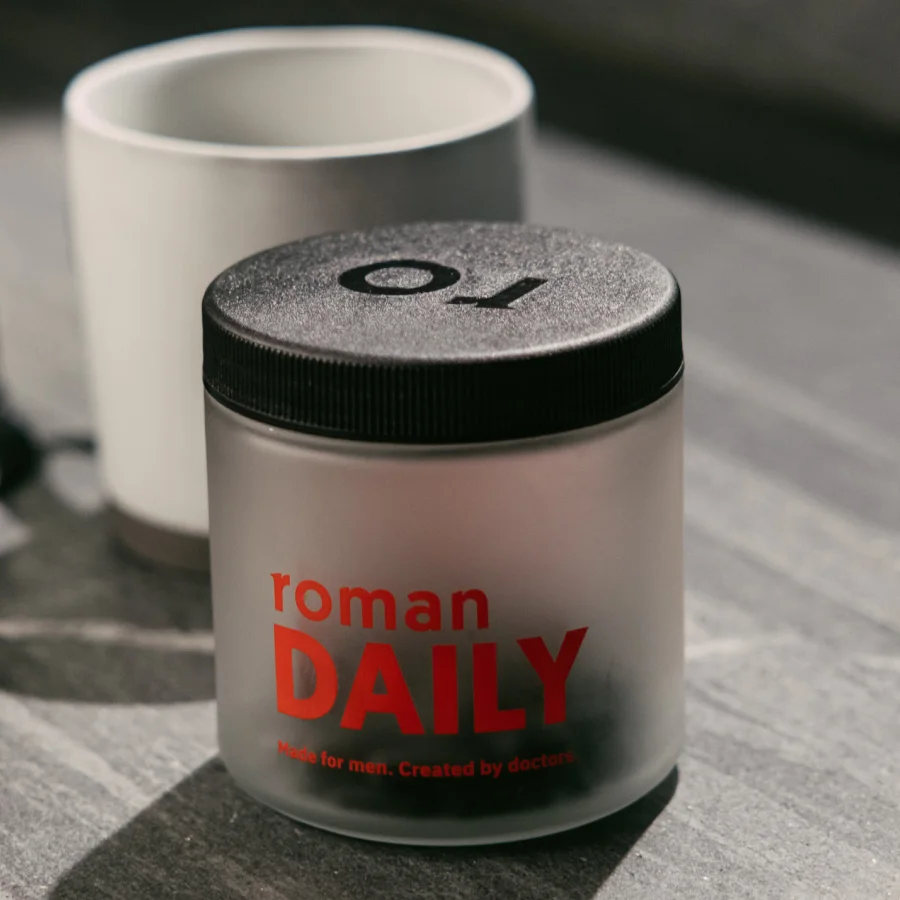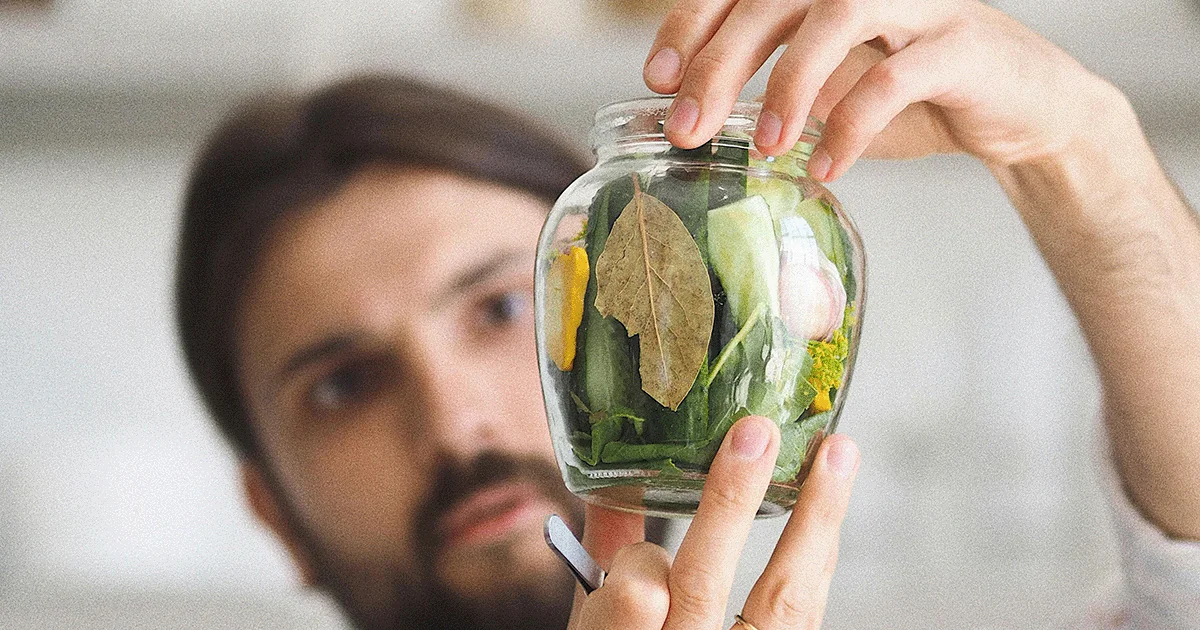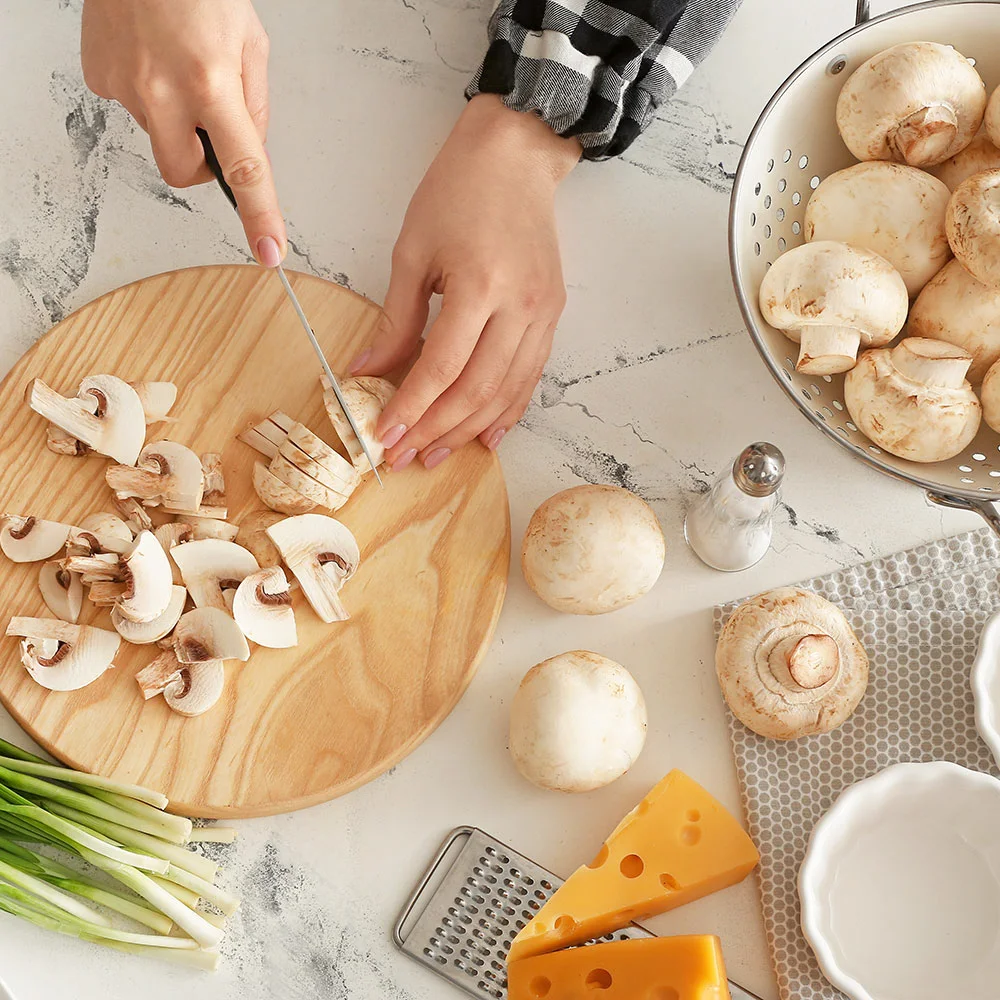Here's what we'll cover
Here's what we'll cover
It’s tempting to judge produce by its cover. Fruits and veggies with darker, richer colors are riper and more packed with vitamins and minerals, right? Well, in a world with food dyes, not necessarily. The same goes for lycopene, a carotenoid, and natural pigment that gives some fruits and vegetables their distinct pink or red color. This plant nutrient is a phytonutrient (like beta-carotene, lutein, and zeaxanthin) but also an antioxidant that gives tomatoes, the most well-known food source of lycopene, their color—but not cherries.
It’s important to learn the difference, though, since lycopene and the foods that contain it have a lot to offer. Antioxidants like lycopene help combat oxidative stress. Oxidative stress can cause cellular damage that has been linked with several chronic diseases, from rheumatoid arthritis and lupus to diabetes, Alzheimer’s, and even certain cancers. Lycopene may also ease asthma symptoms, reduce your risk of cardiovascular disease (CVD) or heart disease, and lower risk of prostate cancer (Wood, 2008; Riccioni, 2008; Chen, 2015).
But most lycopene research is done on tomato products and their consumption. So, though clinical trials we have now may be promising, further work may uncover more benefits based on a wider variety of lycopene sources—and the nutrient combinations found in those foods. Still, the research is impressive. Five studies show a 30–40% reduced risk of cancer, specifically of the prostate, associated with lycopene intake (Giovannucci, 2002). Other research suggests it may also lower lung cancer risk (Michaud, 2000).
Foods high in lycopene
There’s no reference dietary allowance (RDA) established for lycopene, so there’s no golden number for you to try to hit. But lycopene-rich foods should still be on regular rotation in your diet simply because this antioxidant has so many potential health benefits. So where do you get this antioxidant—other than, well, you know.
Tomatoes
You knew it was coming. Roughly 80% of the lycopene intake in the United States comes from tomato products, and for good reason (Soares, 2017). The flush fruits are a good source of the nutrient, no matter what form you choose.
Fresh tomatoes pack 2,573 mcg (micrograms) into a 100 g (or 18-calorie) serving, according to the USDA. But raw tomatoes are far from your only option for taking advantage of this plant’s abundant lycopene content. Use tomato paste in a recipe for 46 mg per one-tablespoon serving (FoodData Central, 2019).
Opt for canned tomatoes for 25.37 mg in 100 g. If your recipe calls for tomato puree, you’ll get 21.75 mg for every 100 g you use. Feeling fancy? Each sun-dried tomato you add to your salad packs 9.18 mg of the nutrient (FoodData Central, 2019).
But we saved the three most common tomato products for last—and they’re truly powerful sources of the antioxidant. Every cup of tomato sauce you use on top of your spaghetti dinner will deliver 34 mg. Start your day with a cup of tomato juice, and you’re also getting 22.4 mg of lycopene. Last, but definitely not least, every tablespoon of delicious ketchup you add to just about anything adds another 18.1 mg to your daily intake (FoodData Central, 2019).
Guava
It’s probably not a fruit you have lying around your kitchen, but this tropical treat is a good source of dietary lycopene. One cup of guava delivers a potent punch of 8.59 mg of the antioxidant in addition to an impressive 9 g of fiber (FoodData Central, 2019).
Papaya
Boost your intake of lycopene and keep your fruit servings exciting by dishing up papaya. One cup of the tropical fruit packs in 4.6 mg of lycopene in addition to enzymes that help digestion (FoodData Central, 2019).
Watermelon
This summer staple is a good way to increase your dietary intake of the important antioxidant. One cup of this lycopene food offers 6.89 mg of the nutrient, though we don’t think we need to give you reasons to eat more of this one (FoodData Central, 2019).
Cooked red peppers
Add one cup of chopped, cooked red peppers to your stir-fry or pasta sauce for an additional 513 mcg of this powerful antioxidant (FoodData Central, 2019).
Pink grapefruit
Sources of lycopene don’t have to be red to be powerful, and the pink grapefruit is a great example. One-half of a grapefruit delivers 1.75 mg (FoodData Central, 2019). It’s also an excellent source of vitamin C.
Persimmon
If you’re going to add persimmon to your diet, it’s worth knowing that there are two different types that are most popular: Fuyu and Hachiya.
Hachiya persimmons look more like an acorn and are astringent with high tannin content. That means they’re inedible before they’re fully ripe and may have a chalky texture. Fuyu persimmons, on the other hand, are edible sooner into their ripening process and are not astringent. Their tannin content is much lower. Either way, you’ll get 267 mcg toward your lycopene intake from one piece of fruit (FoodData Central, 2019).
Red cabbage
Although you’d have to eat an entire large head of red cabbage to get 227 mg of this phytonutrient, it’s an ingredient you can easily work into multiple meals throughout the day (FoodData Central, 2019).
Lycopene supplements
Although lycopene supplements certainly aren’t necessary given the high content of the foods above, they are an easy way to boost your daily intake. People taking blood-thinning or blood pressure-lowering medications should not take lycopene supplements, as they may interfere with the prescription.
It’s worth noting, however, that lycopene from dietary sources seemed to have a bigger impact on heart disease risk than supplements, one study found (Burton-Freeman, 2014). The research was done only on tomato consumption, so more work needs to be done to confirm these findings, but it may be a good idea to boost your intake through food sources when possible.
In rare cases, excessive lycopene intake has caused lycopenodermia, discoloration of the skin. Lycopene, especially from food sources, is generally considered safe, and it’s worth noting that it would take excessive amounts of these foods to cause this condition. One woman who came in with the condition reported drinking roughly two liters of tomato juice daily for several years (Trumbo, 2005).
DISCLAIMER
If you have any medical questions or concerns, please talk to your healthcare provider. The articles on Health Guide are underpinned by peer-reviewed research and information drawn from medical societies and governmental agencies. However, they are not a substitute for professional medical advice, diagnosis, or treatment.
Burton-Freeman, B. M., & Sesso, H. D. (2014). Whole food versus supplement: comparing the clinical evidence of tomato intake and lycopene supplementation on cardiovascular risk factors. Advances in Nutrition, 5 (5), 457–485. doi: 10.3945/an.114.005231. Retrieved from https://academic.oup.com/advances/article/5/5/457/4565754
Chen, P., Zhang, W., Wang, X., Zhao, K., Negi, D. S., Zhou, L., et al. (2015). Lycopene and risk of prostate cancer. Medicine, 94 (33). doi: 10.1097/MD.0000000000001260. Retrieved from https://www.ncbi.nlm.nih.gov/pubmed/25667028
Kashyap, P. & Farrugia, G. (2010). Diabetic gastroparesis: what we have learned and had to unlearn in the past 5 years. Gut , 59 (12), 1716-1726. doi:10.1136/gut.2009.199703. Retrieved from https://pubmed.ncbi.nlm.nih.gov/26287411/
FoodData Central. (n.d.). FoodData Central Database. Retrieved December 16, 2019 from https://fdc.nal.usda.gov/
Giovannucci, E. (2002). A Review of Epidemiologic Studies of Tomatoes, Lycopene, and Prostate Cancer. Experimental Biology and Medicine , 227 (10), 852–859. doi: 10.1177/153537020222701003. Retrieved from https://pubmed.ncbi.nlm.nih.gov/12424325/
Michaud, D. S., Feskanich, D., Rimm, E. B., Colditz, G. A., Speizer, F. E., Willett, W. C., & Giovannucci, E. (2000). Intake of specific carotenoids and risk of lung cancer in 2 prospective US cohorts. The American Journal of Clinical Nutrition , 72 (4), 990–997. doi: 10.1093/ajcn/72.4.990. Retrieved from https://academic.oup.com/ajcn/article/72/4/990/4729443
Riccionni, G., Mancini, B., Bucciarelli, T., & D'Orazio, N. (2008). Protective effect of lycopene in cardiovascular disease. European Review for Medical and Pharmacological Sciences , 12 (3), 183–190. Retrieved from https://pubmed.ncbi.nlm.nih.gov/18700690/
Soares, N., da C. P., Machado, C. L., Trindade, B. B., Lima, I. C., do C., et al. (2017). Lycopene Extracts from Different Tomato-Based Food Products Induce Apoptosis in Cultured Human Primary Prostate Cancer Cells and Regulate TP53, Bax and Bcl-2 Transcript Expression. Asian Pacific Journal of Cancer Prevention , 18 (2), 339–345. doi: 10.22034/APJCP.2017.18.2.339. Retrieved from https://pubmed.ncbi.nlm.nih.gov/28345329/
Trumbo, P. R. (2005). Are there Adverse Effects of Lycopene Exposure? The Journal of Nutrition , 135 (8), 2060S–2061S. doi: 10.1093/jn/135.8.2060S. Retrieved from https://pubmed.ncbi.nlm.nih.gov/16046742/
Wood, L. G., Garg, M. L., Powell, H., & Gibson, P. G. (2008). Lycopene-rich treatments modify noneosinophilic airway inflammation in asthma: Proof of concept. Free Radical Research , 42 (1), 94–102. doi: 10.1080/10715760701767307. Retrieved from https://pubmed.ncbi.nlm.nih.gov/18324527/










